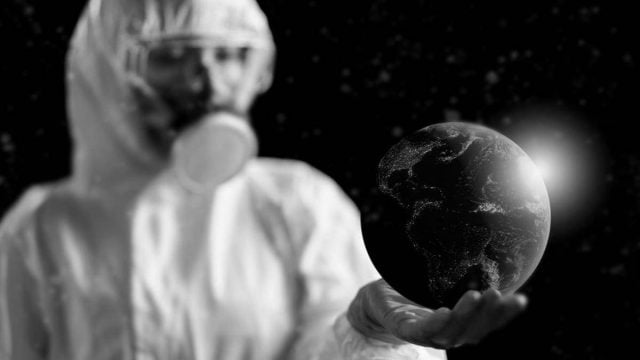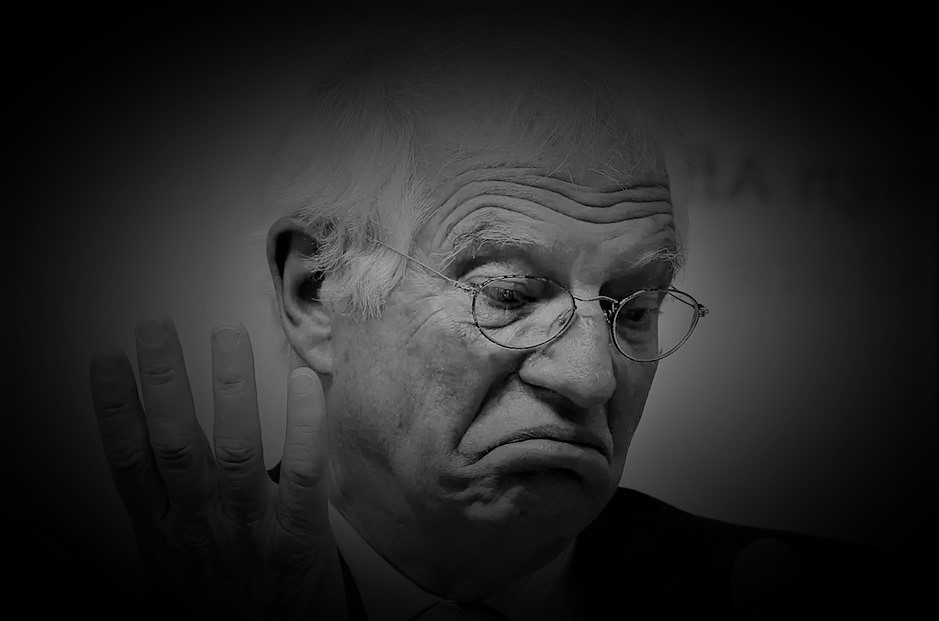«There are two infinite things: the universe and human stupidity, and I’m not so sure about the first». This phrase is attributed by the media to Albert Einstein, Nobel Prize winner in Physics in 1921 and whose IQ was above 160 (the average is 115). He must have had some reason to say it, much more than what we can imagine, when we see how, in the face of COVID-19, governments and societies fall into the same mistakes made during the three great influenza pandemics of the 20th century.
The misnamed “Spanish flu” of 1918, the “Asian flu” of 1957 and the “Hong Kong flu” of 1958, set precedents, protocols and preventive actions that could have helped to slow down and even quickly eradicate the current epidemic of the SARS-CoV-2 coronavirus, which causes the COVID-19 disease.
However, most of the leaders of the major powers reacted very late. Even a year later, with 100 million infected and 2.3 million dead, some societies maintain their denial. It is these, who run the risk of being one more regrettable statistic in this pandemic that affects almost 200 countries, according to data from Johns Hopkins University.

Was there a late response to COVID-19?
Historian Cédric Cotter, a researcher for the International Committee of the Red Cross, made this very clear in an interview with the EFE agency months ago. «History never repeats itself totally, but trends can be seen in one of these events and also in the other».
The Flu of 1918 was excessively lethal: 50 million dead (no study is exact and some estimate 100 million). Each of the following two ‘pandemics’ caused around 1.1 million deaths. All three lasted for approximately two years. COVID-19 has already far exceeded the last two.
When China besieged the city of Wuhan, the world yawned and looked the other way. Then, it completely isolated several cities, and no one considered it was worth taking certain measures. When Italy became the epicenter of the pandemic, many powers still doubted the virus. Finally, the United States fell prisoner of COVID-19, it was too late: the pandemic was global. Then, the «ghosts of Christmas past», as in the story of Charles Dickens, began to fill mass graves with lifeless bodies.

The 1918 flu
In 1918, the pandemic affected a third of the 1,500 million inhabitants of the planet, in the midst of the decline of World War I. The A virus, of the H1N1 subtype, killed its victims extremely quickly, in a matter of days and even hours. In the end, their mortality rate hovered between 10% and 20%.
Millions of people suffered from high fever, earache, body fatigue, diarrhea, vomiting, pulmonary hemorrhage, nasal bleeding, and secondary bacterial pneumonia; many of the symptoms we see today. The result: 50 million deaths. Even so, today there are still governments and societies that do not take COVID-19 seriously.
At that time, wearing masks was mandatory, but only for those who worked with the public. Many governments closed circuses, factories, theaters and commercial premises; they suspended massive events, banned imports and isolated foreigners arriving in the country, recalled a report by National Geographic. The result: 50 million deaths. Today, there are societies that continue to enjoy and attend those places and events described.
In 1918 there was no treatment, but the media sold miracle remedies, elixirs, medicinal herbs; they recommended pain relievers in excessive doses. They even suggested smoking a lot, because «inhaling the smoke killed the germs». The result: 50 million deaths. Even so, months ago, Donald Trump recommended taking disinfectant and many consumed that poison.
In 1918, funeral homes and cemeteries became insufficient. Then, millions of bodies ended up in mass graves, without the possibility of being seen or veiled by their relatives. Yes, there were 50 million deaths, but even today thousands walk the streets without masks, without respecting hygiene measures and put their families and friends, who do decide to take care of themselves, at risk.

The 1957 flu
In February 1957, the first outbreak was reported in the Chinese province of Yunan. Presumably, it was the product of a mutation of a common virus in wild ducks that was crossed with a swine strain that affects humans, reports an ABC report.
Only 30 years had passed since the previous pandemic and many of its survivors were still alive. Although many preventive measures were taken, classes were not suspended and therefore the main affected were “children, adolescents and young adults. Everything coincided with the clustering effect of the school stage”, as the Spanish newspaper report recalls.
Also, international trade and flights did not stop. This accelerated the spread of the virus and triggered a second wave that this time affected adults. Now, although classes were suspended, as well as part of international trade and tourism, the main lesson that this pandemic must leave is another: the mutation of the virus.
Like the 1918 virus, it also developed an adaptive mutation mechanism. That was what allowed it to be a little more deadly in a second wave. Today, SARS-CoV-2 has already mutated several times and the World Health Organization (WHO) warned that the world must prepare, because the second (already underway) and third waves will be more dangerous.

The 1968 flu
In July 1968, the first cases were detected in Hong Kong, until two years later when it disappeared, with more than a million deaths left behind. But why is it also known as the «forgotten flu»? The context has to do with this: in those years world attention was focused on the Vietnam War. Then, the supposed arrival of man to the Moon (1969) and the hippie movement were added. Also highlighted was the struggle for civil rights in the United States, with the very recent assassination of Martin Luther King (April 1968).
The world decided to ignore it, but in less than two months it had already set foot on the American continent: the United States. In a report by the BBC agency, the director of the Basque Museum for the History of Medicine and specialist in the history of diseases, Anton Erkoreka, recalled that «the preventive measures that were taken were not exceptional since it was considered as one more flu». Yes, that last sentence seems like a deja vu of the Brazilian president, Jair Bolsonaro.
Many countries again imposed measures such as social distancing, hand washing and the use of masks. In addition, public transport was restricted, but there were no quarantines, work activity was never stopped. Classes were not suspended, nor were sports competitions suspended, and the economy only slowed down a bit.
The result: more than a million deaths. Even the BBC mentions – as an example – that in Berlin, Germany, «the health authorities stored bodies in subway tunnels». They did so because hospitals and cemeteries could not cope with so many deaths.

Parallels with the COVID-19 pandemic
So, what do the previous three pandemics have in common with the current one? Well, those three experienced a second wave that in all cases was more aggressive and deadly. In the case of COVID-19, the second wave arrived before the first year, with mutant strains and more infections and deaths.
All have been politicized so as to dissociate themselves from responsibilities. The 1918 Flu is called «Spanish Flu», but there is not a single evidence that shows it originated in the European nation. Back with Cédric Cotter – in his interview with EFE – he explained this case. “The disease did not originate in Spain. But, as the spanish press could report about it, many people got to think that it was true. Meanwhile, other countries did not report their cases because of censorship in times of war.
The same agency maintains that different studies confirm that the outbreak began in Kansas, United States. Presumably, in March 1918 a soldier reported to the Fort Riley infirmary with a fever. «Within hours, hundreds of recruits fell ill with similar symptoms, and many more fell ill in the weeks that followed».

Xenophobia and denial of COVID-19
Today, Trump during his tenure, and also a part of the US society, fueled hatred and xenophobia referring to COVID-19 as the “Chinese virus”. However, it has not yet been possible to verify where the virus came from, nor is patient zero known.
Another parallel is the denial of some sectors that refuse to comply with preventive measures considering them exaggerated, inappropriate and useless. Today, that attitude can be seen in protests in the United States, the Netherlands, Brazil, Germany, just to name three nations. All are led by extreme right-wing groups that denounce violations of their human rights.
In 1918, “some argued that the mandatory use of masks was against the constitution and their personal freedoms. With that excuse there were demonstrations and subsequent arrests», Cotter told EFE.
And perhaps the most worrying similarity is that, like previous viruses, SARS-CoV-2 has been classified by the WHO as «a virus that has the capacity to mutate and with endemic potential». In other words, it can be perpetuated over time, just like the COVID-19 disease.
That latest revelation alerts a reality that the president of Venezuela, Nicolás Maduro, has been able to expose very well. On several occasions he has affirmed that the world and the peoples must prepare “to live in a relative and supervised normality of economic, family, and work life. Life will not be the same ”.
Or maybe it happens to us like that approach paraphrased by great philosophers, academics, thinkers and even presidents: «People who do not know their history are condemned to repeat it».




